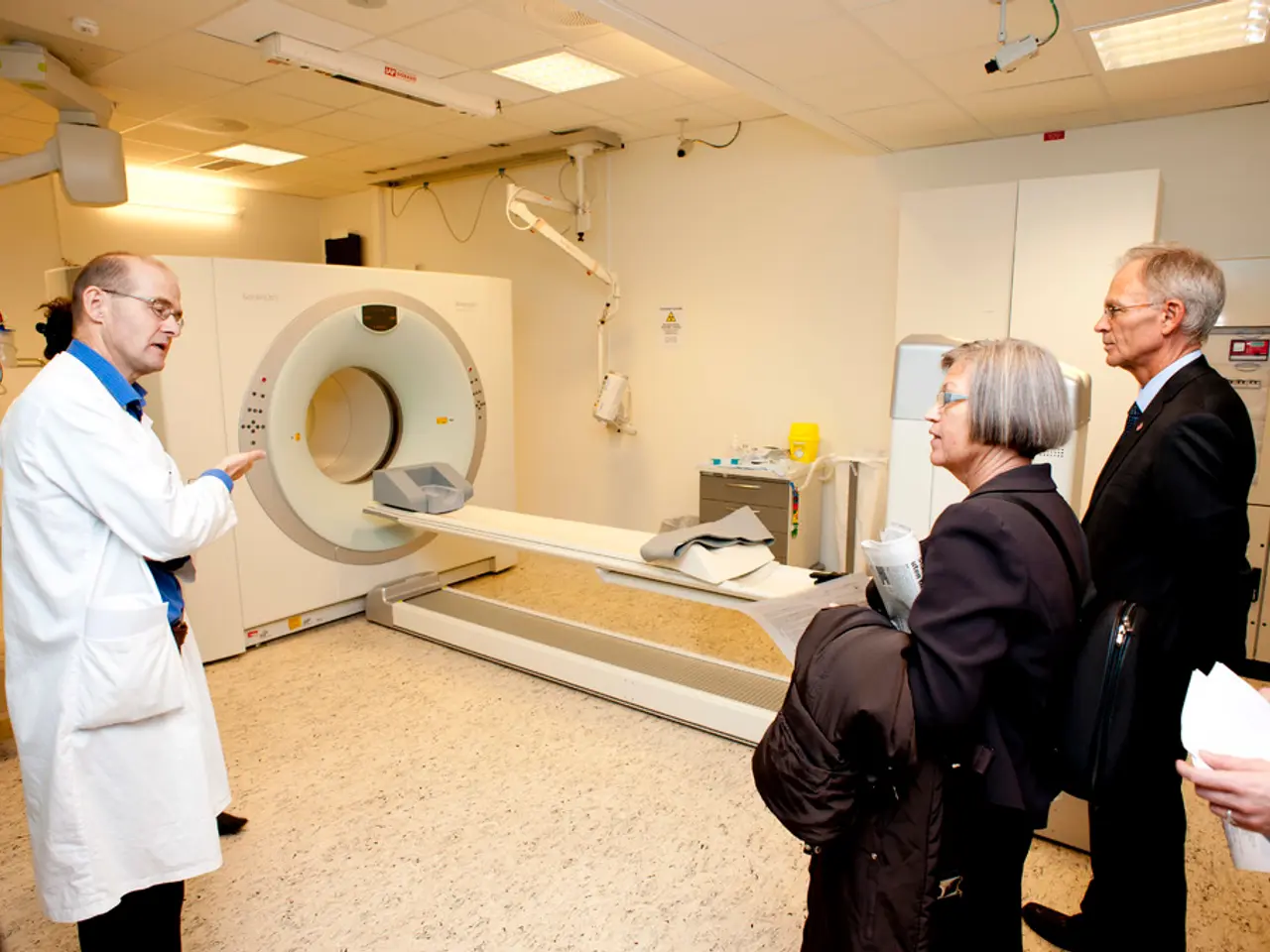Title: Understanding Flexible Bronchoscopy: A Valuable Tool in Pulmonary Medicine
Bronchoscopy Procedure: Purposes, Potential Hazards, Preparation, and Procedure Details
Flexible bronchoscopy is a common medical procedure used in pulmonary medicine to examine the inside of a person's airways and lungs, diagnose respiratory conditions, take biopsies, and perform minor treatments. This procedure is invaluable due to its ability to provide direct visualization of the airways and perform targeted interventions with relatively low complication rates.
Common Indications
The most common indications for flexible bronchoscopy include diagnosing and biopsying lung nodules or masses, evaluating airway obstruction or abnormalities, investigating chronic cough, infections, or unexplained lung symptoms, and performing therapeutic lavage and secretion clearance in lung diseases.
Preparation Steps
Before undergoing a flexible bronchoscopy, a person is typically required to fast for several hours and provide consent. Sedation, such as midazolam, and local anesthesia with lidocaine spray are administered to make the procedure more comfortable. Continuous oxygen saturation monitoring is also maintained throughout the procedure.
Positioning and equipment preparation, including the possible bronchoalveolar lavage (BAL) or local drug administration during the procedure, are also part of the preparation process.
Potential Risks
Although flexible bronchoscopy is generally safe, there are potential risks associated with the procedure. Minor complications may include sore throat, hoarseness, nasal soreness/bleeding, blood-stained sputum, and mild fever. More moderate risks include transient oxygen desaturation and palpitations.
Rare complications include chest infection (less than 1% incidence), respiratory failure, significant bleeding, and life-threatening complications or death (risk below 0.0002%). Continuous monitoring during the procedure helps manage these risks.
Procedure Duration and Recovery
A flexible bronchoscopy typically takes between 45 and 60 minutes. After the procedure, a person may experience a sore throat, hoarse voice, small amounts of blood when coughing, and a fever for up to 24 hours. A person should avoid eating or drinking until the local anesthetic wears off, which may take approximately 1 hour.
Pre-Procedure Guidelines
A person may need to refrain from eating or drinking anything for approximately 8 hours before the procedure. They may also be asked to avoid certain medications, such as blood thinners, in the lead-up to the procedure.
It is recommended that a person avoid smoking for 24 hours before the procedure to reduce the risk of complications.
In conclusion, flexible bronchoscopy is a valuable tool in pulmonary medicine, enabling direct visualization, targeted biopsies, and therapeutic interventions with relatively low complication rates. By understanding the common indications, preparation steps, potential risks, procedure duration, and recovery, patients can be better prepared for this crucial medical procedure.
- In addition to diagnosing respiratory conditions, flexible bronchoscopy can also be used to perform neck and throat surgeries, particularly minor ones, due to its ability to provide direct visualization and perform targeted interventions.
- Flexible bronchoscopy can be instrumental in investigating medical-conditions beyond respiratory ones, such as chronic cough, infections, or unexplained lung symptoms, thanks to its diagnostic capabilities for various health-and-wellness issues.
- The science behind flexible bronchoscopy is continually evolving, and new therapies-and-treatments can be developed to alleviate respiratory-conditions by using this valuable tool to access the airways and lungs directly.
- To minimize complications during flexible bronchoscopy, it's essential to follow pre-procedure guidelines like avoiding eating, smoking, and certain medications, as mentioned in the title, "Understanding Flexible Bronchoscopy: A Valuable Tool in Pulmonary Medicine."




